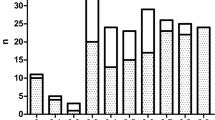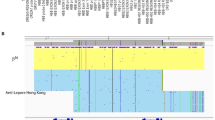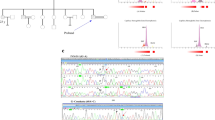Abstract
THE β-thalassaemias are a heterogeneous group of hereditary haematological disorders in which there is absent or decreased synthesis of the β globin chain of normal human adult haemoglobin, HbA (α2β2)1. When β chain synthesis is totally absent, the condition can be referred to as β°-thalassaemia, in contrast to β+-thalassaemia in which some β chain synthesis occurs. The genetics and manifestations of β°-thalassaemia are rather varied. In the heterozygote, there may be either increased levels of the minor haemoglobin, HbA2 (α2δ2) (‘A2-thalassaemia’), or normal levels of HbA2 with elevated levels of foetal haemoglobin, HbF (α2γ2), (‘δβ-thalassaemia’ or ‘F-thalassaemia’). Homozygous β°-thalassaemia of the A2 variety is clinically severe, and has been described mainly in the Ferrara region of northen Italy and in Thailand, although it is found sporadically in other racial groups; the red cells of these individuals contain mainly HbF with variable amounts of HbA2, but no HbA. Homozygous δβ-thalassaemia is extremely rare, having been described in only eight individuals from four different families1; it is associated with only mild symptoms; the red cells of these individuals contain 100% HbF, and there is total absence of both HbA and HbA2.
This is a preview of subscription content, access via your institution
Access options
Subscribe to this journal
Receive 51 print issues and online access
$199.00 per year
only $3.90 per issue
Buy this article
- Purchase on Springer Link
- Instant access to full article PDF
Prices may be subject to local taxes which are calculated during checkout
Similar content being viewed by others
References
Weatherall, D. J., and Clegg, J. B., The Thalassemia Syndromes (Blackwell Scientific Publications, Oxford, 1972).
Nienhuis, A. W., and Anderson, W. F., J. clin. Invest., 50, 2458 (1971).
Benz, E. J., Jr., and Forget, B. G., J. clin. Invest., 50, 2755 (1971).
Dow, L. W., Terada, M., Natta, C., Metafora, S., Grossbard, E., Marks, P. A., and Bank, A., Nature new Biol., 243, 114 (1973).
Nienhuis, A. W., Canfield, P. H., and Anderson, W. F., J. clin. Invest., 52, 1735 (1973).
Forget, B. G., Baltimore, D., Benz, E. J., jun., Housman, D., Lebowitz, P., Marotta, C. A., McCaffrey, R. P., Skoultchi, A., Swerdlow, P. S., Verma, I. M., and Weissman, S. M., Ann. N.Y. Acad Sci. (in the press).
Natta, C., Banks, J., Niazi, G., Marks, P. A., and Bank, A., Nature new Biol., 244, 280 (1973).
Housman, D., Forget, B. G., Skoultchi, A., and Benz, E. J., jun., Proc. natn. Acad. Sci. U.S.A., 70, 1809 (1973).
Kacian, D. L., Gambino, R., Dow, L. W., Grossbard, E., Natta, C., Ramirez, F., Spiegelman, S., Marks, P. A., and Bank, A., Proc. natn. Acad. Sci. U.S.A., 70, 1886 (1973).
Conconi, F., Rowley, P. T., Del Senno, L., Pontremoli, S., and Volpato, S., Nature new Biol., 238, 83 (1972).
Rowley, P. T., and Kosciolek, B., Nature new Biol., 239, 234 (1972).
Silvestroni, E., Bianco, I., and Reitano, G., Acta Haemat., 40, 220 (1968).
Author information
Authors and Affiliations
Rights and permissions
About this article
Cite this article
FORGET, B., BENZ, E., SKOULTCHI, A. et al. Absence of Messenger RNA for Beta Globin Chain in β°-Thalassaemia. Nature 247, 379–381 (1974). https://doi.org/10.1038/247379a0
Received:
Revised:
Issue Date:
DOI: https://doi.org/10.1038/247379a0
This article is cited by
-
The efficiency of nonsense-mediated mRNA decay is an inherent character and varies among different cells
European Journal of Human Genetics (2007)
-
Nonsense-mediated mRNA decay modulates clinical outcome of genetic disease
European Journal of Human Genetics (2006)
-
Molecular mechanism for distinct neurological phenotypes conveyed by allelic truncating mutations
Nature Genetics (2004)
-
β-Globin mRNA in Ferrara β0-thalassaemia
Nature (1977)
-
Direct demonstration of β-globin mRNA in homozygous Ferrara β0-thalassaemia patients
Nature (1977)
Comments
By submitting a comment you agree to abide by our Terms and Community Guidelines. If you find something abusive or that does not comply with our terms or guidelines please flag it as inappropriate.



